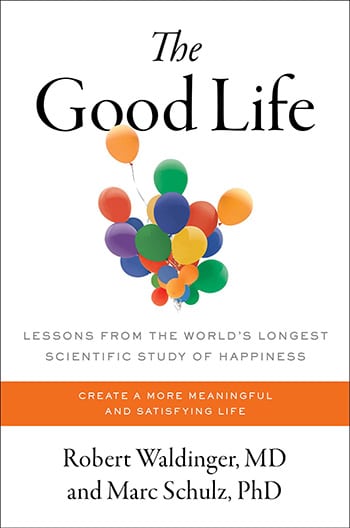Started in 1938, the Harvard Study of Adult Development represents the longest study on happiness ever conducted. It set out to follow a group of men through every stage of their lives, from youth to old age, to discover what factors lead people to flourish. Here to share some of the insights that have been gleaned from the Harvard Study of Adult Development is Dr. Robert Waldinger, the current director of the project and the co-author of The Good Life: Lessons from the World’s Longest Scientific Study of Happiness. Today on the show, Robert explains how the study has affirmed the absolute primacy of relationships in happiness and how to develop the “social fitness” to make and enrich those vital connections. We discuss what the happily married couples in the study did differently, and why happiness in marriage tends to follow a U-shaped curve which hits its low point in midlife. We talk about how the way you were raised helps set a trajectory for your life, but how it’s also possible to overcome a rough upbringing to become a transitional character in your family. We also discuss the role that friends and work played in the happiness of the men who participated in the study. We end our conversation with what folks in every stage of development — whether youth, midlife, or older age — should focus on to live a flourishing life.
Started in 1938, the Harvard Study of Adult Development represents the longest study on happiness ever conducted. It set out to follow a group of men through every stage of their lives, from youth to old age, to discover what factors lead people to flourish.
Here to share some of the insights that have been gleaned from the Harvard Study of Adult Development is Dr. Robert Waldinger, the current director of the project and the co-author of The Good Life: Lessons from the World’s Longest Scientific Study of Happiness. Today on the show, Robert explains how the study has affirmed the absolute primacy of relationships in happiness and how to develop the “social fitness” to make and enrich those vital connections. We discuss what the happily married couples in the study did differently, and why happiness in marriage tends to follow a U-shaped curve which hits its low point in midlife. We talk about how the way you were raised helps set a trajectory for your life, but how it’s also possible to overcome a rough upbringing to become a transitional character in your family. We also discuss the role that friends and work played in the happiness of the men who participated in the study. We end our conversation with what folks in every stage of development — whether youth, midlife, or older age — should focus on to live a flourishing life.
